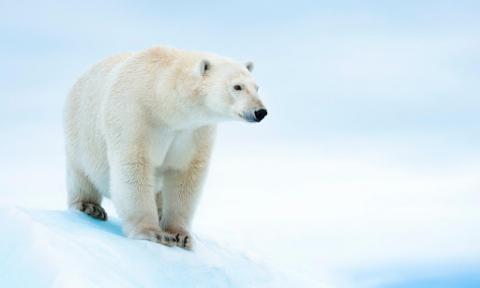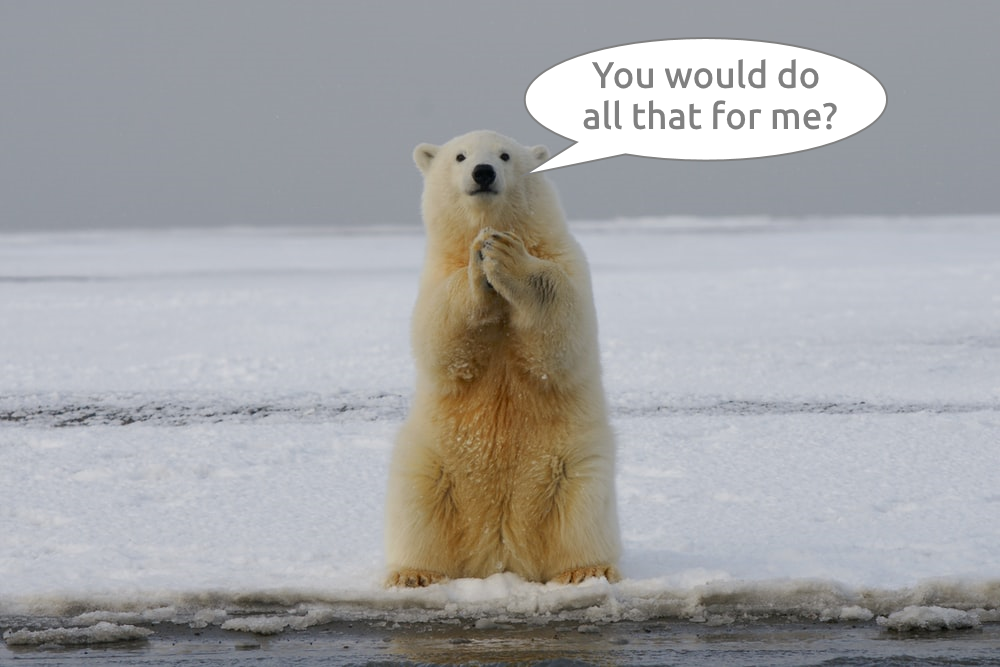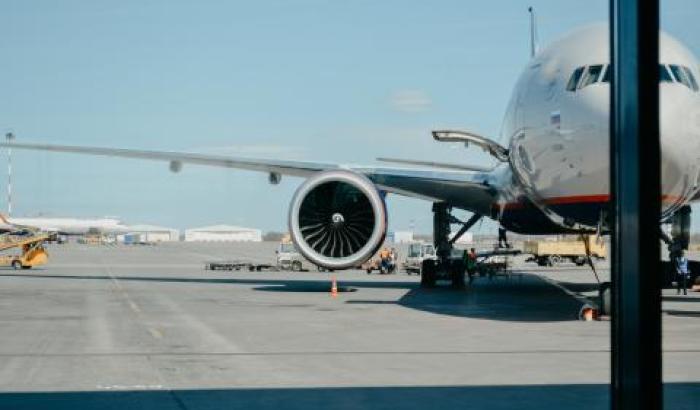
How many continuous descent final approaches do you have to fly to save a polar bear?
A ‘Fermi’ question.
Over the school summer holidays my physics teacher, Mr Locke, used to provide a ‘little something to be getting on with’. For the gap between my GCSEs and A Levels he introduced us to the Fermi Approximations. You may have heard of Enrico Fermi the Italian physicists who created the world’s first Nuclear reactor. The Fermi Approximations take their name from Enrico Fermi and his ability to make estimations based on little to no data. Often described as ‘back of the envelope equations’ Fermi Approximations are justified guesses based on best estimates – a bit like some pilots take off performance calculations.
So what are they good for and where do the polar bears come into this? Well, Fermi Approximations offer an ‘answer’ to questions which often don’t need answering - or are the type of question that makes your brain hurt. Possibly the most famous is the Drake Equation. This is the approximation of how many ‘intelligent’ civilisations exist in the galaxy. The equation produces a lowest estimate of 1000 – I am not sure if that includes humans as an intelligent civilisation.
The Polar Bears? Well as a Pilot with an unsurprising amount of time on my hands and a lot of David Attenborough documentaries to watch, the only logical thing to do was come up with a fermi question, right? Pilots are probably not on the top of Greta Thunberg’s Christmas card list but airlines and plane manufacturers are constantly striving for the latest and greatest in fuel efficiency and reducing the environmental impact of flying. While continuous descent final approaches are primarily a cost cutting procedure by burning less fuel you are also ‘theoretically’ reducing your environmental impact; but by how much? Well this is where the Polar Bears come in. Rather than using a logical boring scientific unit it’s far more fun to use something completely illogical and un-related and borderline stupid.
The first things to note are the words “roughly”, “approximately” and “near enough” are going to be used in the following calculations more times than a Cowboy Airlines approach brief. This is far from cutting edge science but what the heck…
So let’s start by looking at roughly the amount of fuel we save doing a CDFA (Continuous Descent Final Approach). Luckily Boeing have already researched this (they must be doing a similar calculation to us) so let’s just use their figures for ease. In this report they concluded that a Flaps 30 CDFA in a B737-800 saves 8Kgs of Jet A-1 (Fuel). I don’t remember all of my ATPLs but I don’t believe there was a Jet A-1 to Polar Bear conversion so it’s time to get creative.
In 2016 EIA (The US Energy Administration) released these stats that state that per US Gallon of Jet A-1 burnt, 9.57Kg of CO2 are emitted. So converting our 8Kgs of fuel saved, into US gallons is 2.63 US Gallons of fuel saved. Multiple that by the 9.57Kg of CO2 per US Gallon of fuel burnt and you get 25.2Kg of CO2 that hasn’t been emitted because the fuel hasn’t been burnt. Still following?
Another study by people immensely cleverer than me found that for every ton of CO2 emitted, 3 square meters of arctic ice melt. A quick calculation turns our 25.2Kg of CO2 saved into 0.075m2 of ice that we have saved by flying a CDFA. That is ‘approximately’ an iceberg the size of a piece of A3 paper. Time to introduce the Polar Bear.
So how much Ice does a Polar Bear need? Unfortunately due to the Coronavirus Pandemic I have been unable to speak to a Polar Bear directly so again we will have to apply some Fermi estimations here to get a figure that we can use. Just like that annoying First Officer, Polar Bears spend 50% of their time hunting for food. They rely heavily on sea ice as it allows them to travel further, rest more easily and mate more often. When polar bears are forced onto dry land they come into conflict with humans and unsurprisingly find considerably less fish to eat. Arctic sea ice melting has led to the 31,000 remaining Polar Bears being recognised now as ‘vulnerable’. If we take the ‘worst case scenario’, the summer, sea ice covers 6,500,000,000,000m2 according to this record. If we make some bold ‘assumptions’ and spread every polar bear over that area, each bear has 209,677,419m2 each or ‘roughly’ 0.2km2. That’s equivalent to about 37 football fields of ice per Bear in our world of approximations – you can see why the Polar Bears are struggling.
As for the answer to our original question, how many CDFAs do you have to fly to save a polar bear? If each CDFA saves X amount of Ice, and Polar Bears ‘need’ Y amount of Ice, you divide Y by X and there we have it.
The answer is: 2,795,698,920 CDFAs need to be flown to save a Polar Bear – so best of luck with that.

All of our calculations and approximations have actually given us a Kg of Jet A-1 to Polar Bear conversion factor of: 0.0000000000447. Here’s that in a few other stats:
176,152,477 - 737-800 Go Arounds Flown destroys a polar bears habitat.
15,979,546 - 747-400 Go Arounds Flown destroy a polar bears habitat.
29,449 of The World’s Longest Commercial Flights destroys a polar bears habitat.
So what have we learnt? Well basically that I have wasted your time. With 38.9 Million flights in the whole of 2019, even if every single one was a perfect CDFA (and in a 737-800 – what was that about assumptions?) you would still be 2.7 billion CDFAs away from saving a Polar Bear. So why bother with CDFAs? It’s really simple - Money.
If you flew those 2.7 Billion CDFAs to save a Polar Bear, you will actually have saved your airline £7,380,645,149 at today’s fuel prices. I can bet your bottom dollar if CDFAs somehow saved fuel but cost money, the airlines would not be pushing you to fly them.
The Conclusions
While this has been a fairly satirical, and in some ways stupid article, what can you take away from it? Well mainly, “I didn’t fly the go-around because of the impact to Polar Bears” is not an acceptable response to your base captain after an un-stable approach. In fact, Aviation globally only contributes to around 2% of the human induced CO2 emissions and what does it bring in return? A GDP that would rank it as 20th in the world if it was a country, by generating over $690 billion, connecting nearly 4.6 billion people and transporting thousands of tons of vital cargo far quicker than any other form of transport.
It is also worth recognising that reducing the CO2 emissions from flying over night is not possible. Arriving on Monday morning to your low cost carrier with a bowser full of eco-friendly fuel being towed behind your Prius and telling the refueller to “brim it with this today mate” is a sure fire way of having a ‘Sully’ moment after departure. Advancements in technology that reduce fuel burn and other carbon offsetting techniques take time, but they are being worked on with the aim for most airlines to be carbon neutral by 2050. Reducing your own personal carbon footprint is all about “controlling the controllables” – do what you can do, because “every little helps”. If flying a CDFA stops a mini iceberg from melting, you could do it. If taking your sandwiches to work in a paper bag not a plastic one saves an arctic mouse, you should do it. If welcoming more efficient or different fuel powered aircraft is needed, you should do it.
Determining if the benefits of aviation outweigh the environmental impact is a moral question which everyone will have an answer to, all that is guaranteed is global aviation cannot and will not stop.
Thank you for reading and I hope for all of our sakes that a return to flying arrives before I think of another Fermi Estimation.
Blue Skies…
Fun not science…
If you have completed flight training in the last 2 years why not take 5 minutes to leave a review on our platform. Click here to get started.
If you would like to learn more about Polar Bears: click here
If you would like to learn more about the impact of Global Aviation: click here
If you would like to read more about Carbon Neutral airline plans: click here
If you would like to read more about Fermi Estimations: click here










